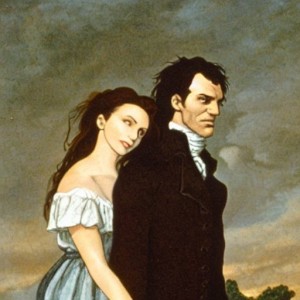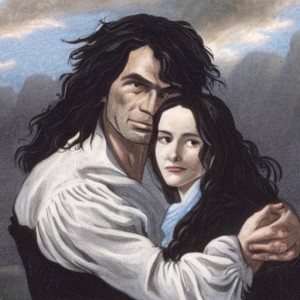“Wuthering Heights” is a novel by the author Emily Bronte. She wrote it through 1845 and 1846 and then first published in 1847. Many people have not only read the book but have also liked it. This is due to the contradicting ideas that are also entertaining in the book such as love, classism, and revenge, just to name a few. These are ideas that everyone reading the novel can relate to because they are part of our reality as a people. These and many other truths are greatly represented throughout Emily Bronte’s Wuthering Heights. Realistic representation of ideas is a very good aspect of any novel. Thus, more and more people should yearn to readers of this wonderful book.
Main Ideas in Wuthering Heights
- Love
This is one of the most dominant ideas in the novel. Two main characters in Emily Bronte’s Wuthering Heights were so in love it drove them crazy. The two lovers were Catherine from the Linton family, and Heathcliff from the Earnshaw family. Catherine possesses a hostile character but due to her love for Heathcliff, she dramatically changes into this orderly, happy and friendly lady when the latter is around. Heathcliff on the other hand, is so madly in love with Catherine that he gets so angry at anyone who opposes his love for her. - Vengeance
This idea has been presented as going hand in hand with love in the novel. Heathcliff loathes his step-brother Hindley for being given authority over the house, leaving him out of the cake of power. Adding salt to an injury, Catherine rejects him regarding his social status. He feels belittled and this creates a need for revenge in him. He therefore decides and purposes to revenge on Hindley. - Classism
Classism is also known as social class war between the poor and the rich. It still exists today in our society and it has gotten even worse. Classism has been represented by how Catherine, who is so wealthy, treats Heathcliff with intimidation due to his humble background. Catherine refers to Heathcliff as a low class gypsy. This prompted Heathcliff to go missing in action for 3 years after which he returned a changed person. Not wealthier but better in manners and dressing code.
The History of Wuthering Heights
Emily Bronte’s Wuthering Heights is a complex love story involving a male orphan and a rich female. The novel was first published in December 1847 and has been one of the best-selling novels. It is also one of the most read novels since it combines more than one genres in the most creative of ways. Genres including gothic fiction, fiction classics, literary fiction, romance, ghost stories, tragedy, and poetic allegory has spiced up the story which is based on a true setting – the wind-swept moorlands of Northern England. Up to date, readers still find the story very disturbing and has continued to attract a lot of readership and also a lot of critique.
Problems in The Novel
Some of the problems presented in Emily Bronte’s Wuthering Heights are those that any author would face in the whole process starting from writing, editing, all the way to publishing. The novel received a lot of critique from publishers citing various issues such as repetition due to much dualism and structural differences. The version that the author Emily Bronte had in mind is not the same version as the final. The main problem, therefore, is that the novel did not actually put out to the world all that was meant to be. As a result of rejection of the original version of the novel, some parts of the novel still remain disturbingly confusing to the readers. Not to forget that the story is not chronologically consistent at some points.
The plot of the novel
The novel revolves around how Catherine and Heathcliff grew crazily in love with each other. Unfortunately, the love turns into betrayal and vengeance by both parties. Catherine rejects Heathcliff and gets married to a rich man, Edgar, while still being in love with Heathcliff. It becomes a love triangle. Heathcliff finds another suitor, Isabella, with whom they run away together. On realizing this, Catherine gets brain fever and dies and young Catherine is born. Isabella escapes to London and Hindley dies of alcohol addiction leaving Heathcliff as the master of Wuthering Heights. Young Catherine grows old enough and gets romantically attracted to Linton and both lovers stage their romance in winter of 1800. This leads to Heathcliff detaining her so she could marry his son, Linton, by force. Unfortunately, both Edgar Linton and Linton Heathcliff die the same year and Heathcliff is left to be the master of Thrushcross Grange, where Lockwood starts living in as a tenant. After sometime, Lockwood’s tenancy terminates and he goes back to London leaving Young Catherine and a guy called Hareton to start dating. Heathcliff also dies and Young Catherine gets married to Hareton.
Characters in the novel
- Heathcliff
Vengeful and unfriendly – He vows to take revenge on Catherine and Edgar. Due to bitterness from childhood mistreatment, he treats everybody else poorly
Sadistic – he maliciously finds joy in confining Isabella. He also inflicts pain on Hindley and Catherine for small mistakes. He also forcefully confines young Catherine so that he could marry Linton. - Catherine
Understanding – she understands the reason underlying Heathcliff’s behavior.
Cruel – she rejected Heathcliff based on his humble background.
Kind – she finally learnt to like Heathcliff despite his flaws. - Edgar
Loyal – after marrying Catherine, he stays loyal to her for life.
Responsible – keeps his daughter away from any possible threats from Heathcliff. - Hareton
Loving – he finally gets along with Catherine after all the brutality he imposed on her. - Linton Heathcliff
Emasculated – He keeps whimpering all the time and is generally weak. He is easily exploited and manipulated by his father to marry Catherine by force and keep the authority over Thrushcross Grange in the family. He can hardly make a firm decision by himself.
Innocent – he saves his life from being poisoned with jealousy by his father. - Isabella
Delusional – she thought that romance talked about in novels is real.
Naïve – she is unable to realize she is Mr. Heathcliff’s pawn of revenge and even goes ahead to marry him. - Earnshaw
Caring – He gave Heathcliff a home when he was an orphaned street urchin. He also treated Heathcliff as an equal to the family.
Emily Bronte’s Wuthering Heights is a great reflection of our society today. The book is therefore worth readers’ attention as it has untold potential to enhance our understanding and transformation of society.

